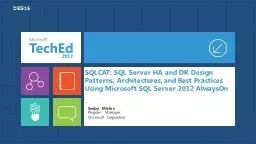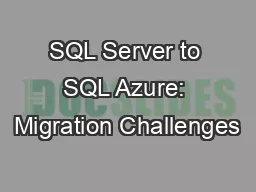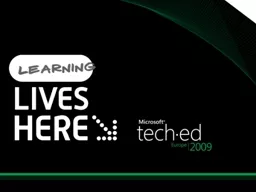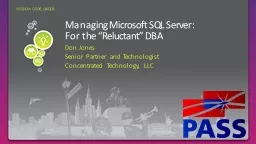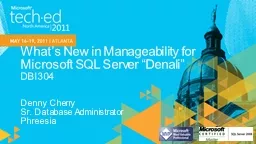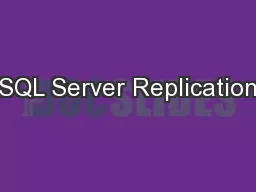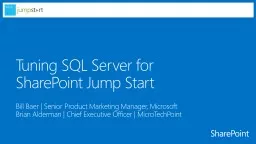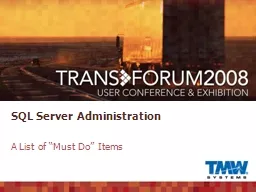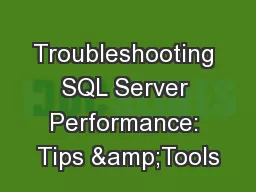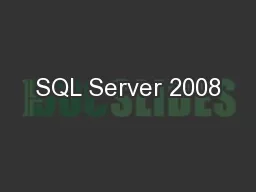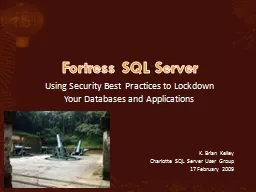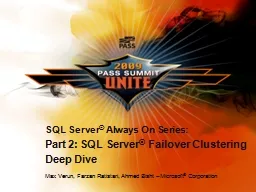PPT-SQLCAT: SQL Server HA and DR Design Patterns, Architectures
Author : liane-varnes | Published Date : 2017-04-30
AlwaysOn Sanjay Mishra Program Manager Microsoft Corporation DBI316 Setting the Stage Assumed Prerequisites for this presentation Basic knowledge of AlwaysOn Failover
Presentation Embed Code
Download Presentation
Download Presentation The PPT/PDF document "SQLCAT: SQL Server HA and DR Design Patt..." is the property of its rightful owner. Permission is granted to download and print the materials on this website for personal, non-commercial use only, and to display it on your personal computer provided you do not modify the materials and that you retain all copyright notices contained in the materials. By downloading content from our website, you accept the terms of this agreement.
SQLCAT: SQL Server HA and DR Design Patterns, Architectures: Transcript
Download Rules Of Document
"SQLCAT: SQL Server HA and DR Design Patterns, Architectures"The content belongs to its owner. You may download and print it for personal use, without modification, and keep all copyright notices. By downloading, you agree to these terms.
Related Documents

